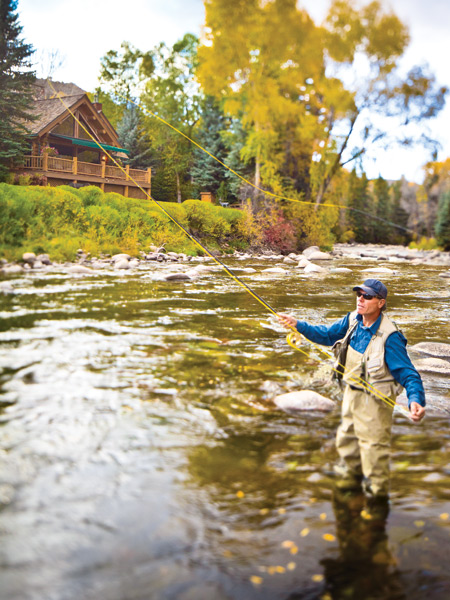
Population Density ( Per Square Mile ): 2,393
Median Household Income: $53,177
Median Home Value: $287,000
Cost of Living Index: 99.9
Mean Commute Time: 15.4 minutes
Unemployment Rate: 4.3%

Population Density ( Per Square Mile ): 1,567
Median Household Income: $50,277
Median Home Value: $223,676
Cost of Living Index: 84.3
Mean Commute Time: 16.1 minutes
Unemployment Rate: 5.6%

Population Density ( Per Square Mile ): 2,277
Median Household Income: $48,428
Median Home Value: $152,122
Cost of Living Index: 83.0
Mean Commute Time: 13.9 minutes
Unemployment Rate: 3.2% Photo by: yotut

Population Density ( Per Square Mile ): 1,174
Median Household Income: $31,842
Median Home Value: $124,961
Cost of Living Index: 85.6
Mean Commute Time: 12.2 minutes
Unemployment Rate: 3.2%

Population Density ( Per Square Mile ): 1,167
Median Household Income: $36,887
Median Home Value: $107,648
Cost of Living Index: 79.7
Mean Commute Time: 16 minutes
Unemployment Rate: 6.8%

Population Density ( Per Square Mile ): 2,930
Median Household Income: $55,978
Median Home Value: $257,468
Cost of Living Index: 90.6
Mean Commute Time: 22 minutes
Unemployment Rate: 4.8% Photo by: Michael Overton

Population Density ( Per Square Mile ): 1,441
Median Household Income: $51,013
Median Home Value: $261,623
Cost of Living Index: 86.0
Mean Commute Time: 19 minutes
Unemployment Rate: 3.6%

Population Density ( Per Square Mile ): 2,552
Median Household Income: $62,620
Median Home Value: $446,413
Cost of Living Index: 96.4
Mean Commute Time: 20.8 minutes
Unemployment Rate: 4.0%

Population Density ( Per Square Mile ): 1,107
Median Household Income: $51,783
Median Home Value: $192,458
Cost of Living Index: 107.2
Mean Commute Time: 12.3 minutes
Unemployment Rate: 10.9%

Population Density ( Per Square Mile ): 316
Median Household Income: $39,947
Median Home Value: $147,842
Cost of Living Index: 86.3
Mean Commute Time: 29.5 minutes
Unemployment Rate: 9.5%

Population Density ( Per Square Mile ): 1,110
Median Household Income: $32,573
Median Home Value: $141,200
Cost of Living Index: 83..
Mean Commute Time: 17.8 minutes
Unemployment Rate: 3.9%

Population Density ( Per Square Mile ): 443
Median Household Income: $39,126
Median Home Value: $187,699
Cost of Living Index: 87.5
Mean Commute Time: 17.6 minutes
Unemployment Rate: 6.0% Photo by freeopinions

Population Density ( Per Square Mile ): 1,031
Median Household Income: $38,034
Median Home Value: $119,510
Cost of Living Index: 79.9
Mean Commute Time: 12.3 minutes
Unemployment Rate: 4.8% Photo by MsPatt

Population Density ( Per Square Mile ): 335
Median Household Income: $50,386
Median Home Value: $264,893
Cost of Living Index: 88.8
Mean Commute Time: 17.7 minutes
Unemployment Rate: 3.2%

Population Density ( Per Square Mile ): 1,752
Median Household Income: $74,742
Median Home Value: $207,394
Cost of Living Index: 85.5
Mean Commute Time: 17.9 minutes
Unemployment Rate: 4.5%

Population Density ( Per Square Mile ): 2,451
Median Household Income: $46,539
Median Home Value: $343,553
Cost of Living Index: 94.3
Mean Commute Time: 13.9 minutes
Unemployment Rate: 7.5% Photo by Gary VanDenBerg

Population Density ( Per Square Mile ): 2,809
Median Household Income: $41,129
Median Home Value: $116,279
Cost of Living Index: 93.7
Mean Commute Time: 17.4 minutes
Unemployment Rate: 5.2% Photo by sassysalcharters

Population Density ( Per Square Mile ): 1,714
Median Household Income: $37,072
Median Home Value: $107,708
Cost of Living Index: 91.0
Mean Commute Time: 14.0 minutes
Unemployment Rate: 4.6%

Population Density ( Per Square Mile ): 1,856
Median Household Income: $31,758
Median Home Value: $94,285
Cost of Living Index: 77.5
Mean Commute Time: 16.1 minutes
Unemployment Rate: 6.4%

Population Density ( Per Square Mile ): 1,549
Median Household Income: $45,830
Median Home Value: $244,500
Cost of Living Index: 93.3
Mean Commute Time: 17.8 minutes
Unemployment Rate: 7.7%

Population Density ( Per Square Mile ): 1,780
Median Household Income: $34,304
Median Home Value: $111,400
Cost of Living Index: 86.5
Mean Commute Time: 16.9 minutes
Unemployment Rate: 9.1%

Population Density ( Per Square Mile ): 1,122
Median Household Income: $31,726
Median Home Value: $161,773
Cost of Living Index: 85.5
Mean Commute Time: 19.1 minutes
Unemployment Rate: 6.3%

Population Density ( Per Square Mile ): 568
Median Household Income: $41,911
Median Home Value: $102,474
Cost of Living Index: 81.6
Mean Commute Time: 14.1 minutes
Unemployment Rate: 7.2%

Population Density ( Per Square Mile ): 2,183
Median Household Income: $40,732
Median Home Value: $104,075
Cost of Living Index: 79.8
Mean Commute Time: 14.5 minutes
Unemployment Rate: 4.9% Photo by Gordilly

Population Density ( Per Square Mile ): 1,928
Median Household Income: $40,923
Median Home Value: $115,008
Cost of Living Index: 79.7
Mean Commute Time: 10.6 minutes
Unemployment Rate: 3.7%

Population Density ( Per Square Mile ): 1,778
Median Household Income: $27,385
Median Home Value: $71,513
Cost of Living Index: 80.0
Mean Commute Time: 18.3 minutes
Unemployment Rate: 12.0% Photo by Charles and Clint

Population Density ( Per Square Mile ): 905
Median Household Income: $48,826
Median Home Value: $515,583
Cost of Living Index: 107.4
Mean Commute Time: 23.4 minutes
Unemployment Rate: 3.7%

Population Density ( Per Square Mile ): 1,121
Median Household Income: $26,266
Median Home Value: $89,554
Cost of Living Index: 81.6
Mean Commute Time: 15.9 minutes
Unemployment Rate: 5.4% Photo by Tom Allen

Population Density ( Per Square Mile ): 1,539
Median Household Income: $43,076
Median Home Value: $146,423
Cost of Living Index: 80.2
Mean Commute Time: 9.8 minutes
Unemployment Rate: 6.7%

We scoured the United States to find places where great hunting and fishing starts right at the edge of town.
